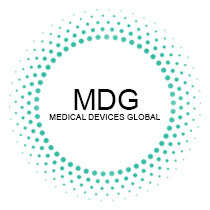In the ever-evolving landscape of healthcare, the combination of medical device robotics and telesurgery has emerged as a groundbreaking innovation. Telesurgery, the practice of remotely conducting surgical procedures using robotic systems, has the potential to revolutionize surgical care in 2023 and beyond.
This article explores the current state of medical device telesurgery with robotics and delves into the future possibilities that this technology holds for the field of surgery.
The Present: Medical Device Telesurgery
In 2023, medical device telesurgery is already transforming the way surgeries are performed. Surgeons can remotely control robotic systems from a console, manipulating robotic arms with exceptional precision and dexterity. This advanced technology enables surgeons to perform complex procedures across great distances, providing patients with access to specialized surgical expertise regardless of their geographic location.
The Benefits of Medical Device Telesurgery
Access to Specialized Expertise: Telesurgery bridges the gap between highly skilled surgeons and patients in underserved areas. Surgeons can remotely guide the robotic systems, providing surgical care to patients who may not have had access to specialized expertise otherwise. This improved accessibility to surgical care is particularly significant for complex procedures that require specialized skills.
Reduced Travel and Waiting Times: Telesurgery eliminates the need for patients to travel long distances for surgical consultations and procedures. Instead, patients can receive expert care within their local healthcare facilities, minimizing travel-related expenses and reducing waiting times for surgery.
Improved Outcomes: The integration of robotic systems in telesurgery enhances surgical precision and accuracy. The robotic arms can perform delicate maneuvers with greater stability and control, reducing the risk of human error. This improved precision translates into better surgical outcomes, shorter recovery times, and reduced complications for patients.
Learning Opportunities: Telesurgery provides an invaluable platform for knowledge-sharing and training. Surgeons can collaborate and mentor others remotely, allowing for the dissemination of expertise to a wider audience. This collaborative learning environment fosters continuous improvement in surgical techniques and promotes innovation in the field.
The Future: Advancements and Possibilities: As we look toward the future, medical device telesurgery with robotics holds immense potential for further advancements. Here are some exciting possibilities:
Haptic Feedback and Sensory Integration: Future robotic systems may incorporate haptic feedback, allowing surgeons to receive tactile sensations during telesurgery. This sensory integration could provide a more immersive experience, enabling surgeons to perform procedures with a heightened sense of touch and precision.
Artificial Intelligence and Automation: Integration of artificial intelligence (AI) and machine learning algorithms could enhance the capabilities of telesurgery. AI can analyze vast amounts of patient data, assist in surgical decision-making, and provide real-time guidance during procedures. Automation features could help streamline routine tasks, allowing surgeons to focus on more complex aspects of surgery.
Remote Expert Networks: Telesurgery may foster the development of remote expert networks, connecting surgeons across the globe. Surgeons could collaborate, seek second opinions, and exchange insights, benefiting from a collective pool of expertise. This networked approach could greatly enhance surgical care and further improve patient outcomes.
Virtual Reality and Augmented Reality: The integration of virtual reality (VR) and augmented reality (AR) technologies into telesurgery could provide surgeons with an immersive visual experience. Surgeons could visualize patient anatomy in three dimensions, overlay vital information, and precisely plan surgical approaches. This technology could enhance situational awareness and facilitate complex surgical maneuvers.
Conclusion
Medical device telesurgery with robotics has already revolutionized the field of surgery, and its potential for growth is vast. In 2023 and beyond, this innovative approach to surgical care offers improved accessibility to specialized expertise.


